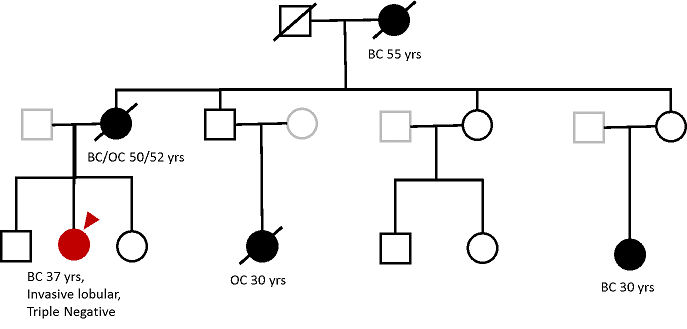Toolbox for Genetic Risk Prediction
Help Index > Toolbox for Genetic Risk Prediction
Live Demo (Login required)
1. Background
Individuals with pathogenic germline mutations in DNA repair genes have a substantially increased cancer risk. Typically, their families are characterized
by multiple or early onset cases of cancer. The prediction of mutation and cancer risks by genetic and clinical counselors is important for clinical decision
making regarding genetic testing and cancer prevention. However, these risks are very variable and highly depend on the specific familial cancer history.
Worldwide a variety of statistical risk prediction models have been developed and published for two common types of hereditary cancers: hereditary
breast and ovarian cancer, and hereditary non-polyposis colorectal cancer. However, only few models have been implemented in convenient and
easy-to-use applications so far.
2. Problem
Figure 1 shows a typical pedigree of a family suspected of having hereditary breast and ovarian cancer, a member of which (so called “index patient”,
marked in red) is seeking advice in a familial cancer clinic.

Figure 1: Pedigree with multiple and early onset cases of breast cancer (BC) and ovarian cancer (OC)
In a first step, the genetic counselor has to decide whether genetic testing should be offered to this family or not. This decision depends on the expected probability to find a disease-causing mutation. Genetic risk models can be used to predict this risk for individual families and thus to assist the counselor in clinical decision making.
Figure 1: Pedigree with multiple and early onset cases of breast cancer (BC) and ovarian cancer (OC)
In a first step, the genetic counselor has to decide whether genetic testing should be offered to this family or not. This decision depends on the expected probability to find a disease-causing mutation. Genetic risk models can be used to predict this risk for individual families and thus to assist the counselor in clinical decision making.
3. Solution
The Health Atlas (WP2 A1) provides an integrative platform with different tools allowing clinicians and genetic counselors a convenient and
easy-to-use calculation of individual mutation and disease risks. This Guided Tour demonstrates as an example the application of the "Manchester Scoring
System" model based on the above example family. The Manchester Scoring System calculates a risk score for
BRCA1 and BRCA2 mutations (the most common genes affected) based on the numbers and pathological features of cancers observed in a family. The
example family has four cases of breast cancer and two cases of ovarian cancer with different ages of diagnosis. This information can be entered in a
simple and self-explaining data entry mask as follows.

Pathological information is entered as follows. After completion of data entry, the result can be calculated.

Pathological information is entered as follows. After completion of data entry, the result can be calculated.
4. Results
The “Manchester Scoring System” yields a score value, which can be translated into an interpretable probability for detection of a BRCA1 or BRCA2
mutation. This is graphically shown in the Results section of the tool. For the example family, the calculated score of 49 corresponds to a mutation risk of
80.8%, which would justify genetic testing.
